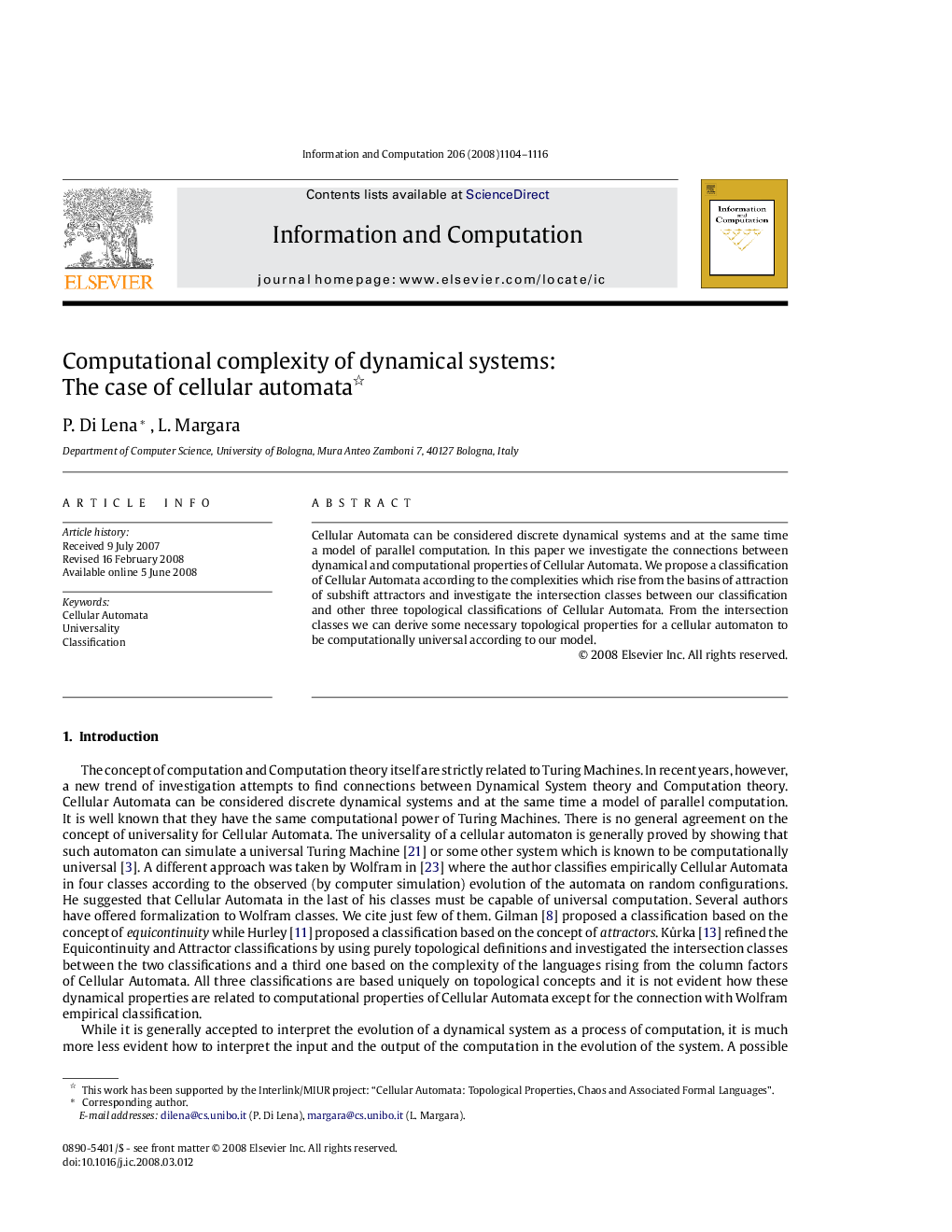| Article ID | Journal | Published Year | Pages | File Type |
|---|---|---|---|---|
| 426266 | Information and Computation | 2008 | 13 Pages |
Abstract
Cellular Automata can be considered discrete dynamical systems and at the same time a model of parallel computation. In this paper we investigate the connections between dynamical and computational properties of Cellular Automata. We propose a classification of Cellular Automata according to the language complexities which rise from the basins of attraction of subshift attractors and investigate the intersection classes between our classification and other three topological classifications of Cellular Automata. From the intersection classes we can derive some necessary topological properties for a cellular automaton to be computationally universal according to our model.
Related Topics
Physical Sciences and Engineering
Computer Science
Computational Theory and Mathematics
